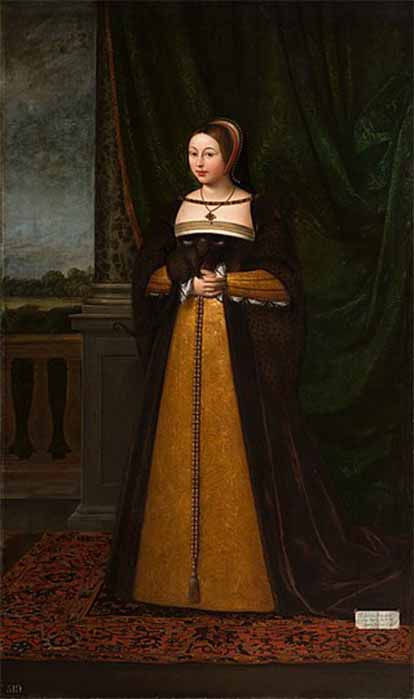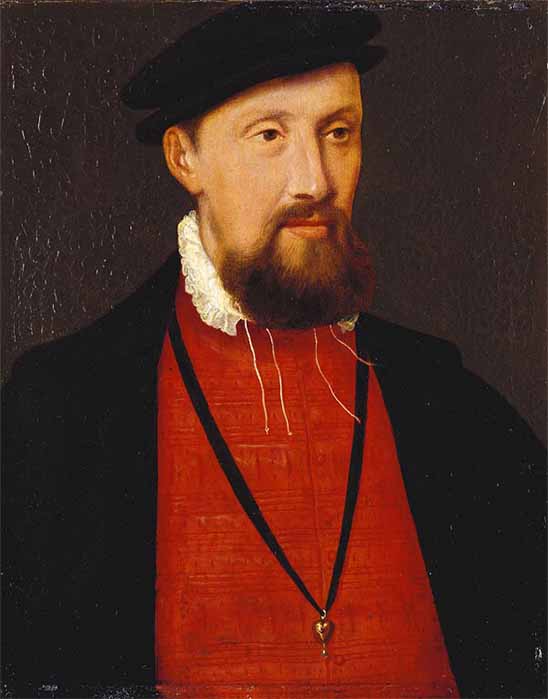
The Remarkable Life Of Margaret Douglas, Countess Of Lennox, Ancestor Of The Royal Bloodline Of Britain
The life of a woman in Tudor England was not an easy one, even for those of noble birth and royal status. The role of a woman was to marry, run a household and produce the all-important male heir. Katherine of Aragon and Anne Boleyn, both wives of King Henry VIII, were very aware of what it meant to fail in this: one was divorced and the other lost her head. Not many women veered from this path, some were lucky enough to be educated like Margaret Roper, the daughter of Sir Thomas More, as he understood the importance of educating his daughters. The Duke and Duchess of Suffolk also ensured their daughters were educated to the same level as a man would be. Their eldest daughter was the ‘nine-days queen’ Lady Jane Grey and she became one of the most well-respected young women of her age and held her place in theologian circles that included many well-educated men such as Henrich Bullinger. Other ladies made their mark in other ways, and Margaret Douglas was one of these ladies.

Margaret Tudor, Queen of Scotland, mother of Margaret Douglas by Daniël Mijtens (1620) Royal Collection (Public Domain)
Born just over the Scottish border at Harbottle Castle in Northumbria, England, Margaret was the daughter of Margaret Tudor, elder sister of King Henry VIII of England; widow of King James IV of Scotland; dowager Queen of Scotland to the heir James V of Scotland; and wife of Archibald Douglas, Earl of Angus. Queen Margaret had fled Scotland in fear of her life after she had remarried without the consent of the Scottish king’s council. As the widow of King James IV and mother of King James V she was not free to marry whom she wished, but the Earl of Angus had managed to persuade her that he was in love with her, when in reality what he loved the most was the power he thought she could bring him. As punishment for disobeying the rules Margaret was forced to hand over her two young sons, James V and Alexander, Duke of Ross to the regent, the Duke of Albany, who came to Stirling Castle to take the two young boys into his care. Facing the loss of her two sons, Margaret was determined she would keep hold of the baby she carried so she fled from Edinburgh Castle to Linlithgow Palace, under the pretense that she was entering her confinement, but she only stayed a few hours before fleeing to head for the safety of her brother’s realm; England.

Ruins of Harbottle Castle, where Margaret was born (Image: Glennsmart/ Public Domain)
As the wind whipped around Harbottle castle’s ramparts the Scottish queen’s screams could be heard throughout the fortress, as she endured an agonizing labor. After a traumatic birth that left her mother with a serious back condition, Margaret Douglas was born on 7 October 1515, becoming her mother’s longed-for daughter at last. Baby Margaret was baptized the day following her birth with Cardinal Wolsey standing as one of her godfathers, which clearly underlined the significance of this little girl’s birth. Margaret’s parents’ lives went separate ways very soon after her birth, as the Earl of Angus advised his wife that he would not be accompanying her south to London when she sought the safety and security of her brother, King Henry VIII’s court. Instead, Angus was to return to Scotland to make peace with the regent Duke of Albany. Dumbstruck at this turn of events, Margaret was to discoverer later her errant husband had started a new life with his mistress misappropriating the dowager queen’s money and properties for their own use.

Margaret’s father Archibald Douglas, sixth Earl of Angus (1490-1557) (Public Domain)
Baby Margaret, the King’s Favorite
The two Margarets were escorted south to London in April following the birth and when they arrived, they were greeted by King Henry VIII who was instantly smitten with his new baby niece. He doted on her and the fondness he showed her as a baby lasted until his death in January 1547. Her mother, Margaret would return north to Scotland the following year where the dowager queen attempted a reunion with her husband the Earl of Angus. The reconciliation did not last and when she sought a divorce from the Pope, Angus was furious, as he was unwilling to forfeit the money and prestige his wife had brought him. The divorced was granted and when Margaret remarried again, Angus took his daughter from her care and headed south to London in the hope that King Henry VIII would take her in and raise his niece at his court. Thankfully the King agreed, and young Margaret became a member of the English court, but she would not see her mother again.




